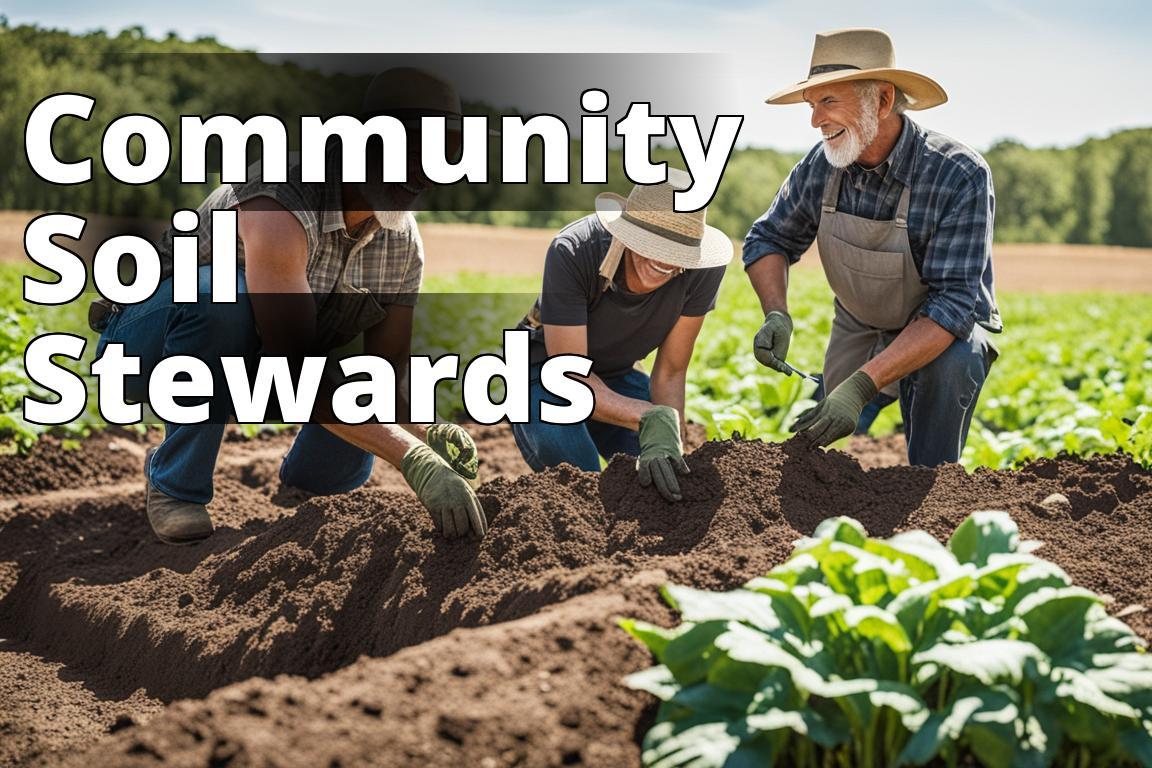Learn About Soil Health Enhancement
- Definition and importance of soil health enhancement for sustainable agriculture
- Components, factors, and benefits of enhancing soil health
- Strategies, local initiatives, monitoring practices, and community involvement for soil health improvement
I. Introduction: What Is Soil Health Enhancement?
What is Soil Health Enhancement, and why is it crucial for sustainable agriculture and land management practices? Soil health enhancement involves improving the biological, physical, and chemical properties of soil to create a fertile and sustainable environment for plant growth. By enhancing soil health, individuals can establish a resilient ecosystem that supports healthy plant growth and reduces the need for synthetic inputs.

Definition of Soil Health Enhancement
Soil health enhancement is the process of enhancing the biological, physical, and chemical properties of soil to create a fertile and sustainable environment for plant growth.
Importance of Enhancing Soil Health for Sustainable Agriculture
Enhancing soil health is vital for sustainable agriculture as it provides essential nutrients, water retention capabilities, and structural support for plant roots. It reduces reliance on chemical fertilizers, increases crop resilience to pests and diseases, and promotes long-term soil sustainability. Moreover, it contributes to environmental conservation by reducing erosion, improving water quality, and sequestering carbon in the soil.
II. Components of Soil Health
Soil health consists of three main components: biological, physical, and chemical properties. Each plays a crucial role in determining soil fertility and productivity.
Biological Properties
The biological properties of soil include microorganisms, fungi, earthworms, and other organisms that aid in nutrient cycling and soil structure. Practices like cover cropping and composting enhance biological diversity and promote a thriving soil ecosystem.
Physical Properties
Physical properties such as soil structure, texture, and porosity are essential for root growth and nutrient uptake by plants. Practices like no-till farming and soil aeration can improve soil structure and promote optimal root development.
Chemical Properties
Chemical properties like soil pH and nutrient content influence nutrient availability to plants. Nutrient management practices and cation exchange capacity are crucial for maintaining optimal nutrient levels in the soil.
| Component | Description |
|---|---|
| Biological Properties | Consist of microorganisms, fungi, earthworms, etc., aiding in nutrient cycling and soil structure. |
| Physical Properties | Include soil structure, texture, and porosity crucial for root growth and nutrient uptake by plants. |
| Chemical Properties | Involve soil pH, nutrient content influencing nutrient availability. Practices like nutrient management are key. |
| Example | Description |
|---|---|
| Community Garden Project X | Implemented cover cropping and composting to enhance soil biological diversity and ecosystem. |
| Sustainable Farm Y | Utilized no-till farming and soil aeration to improve soil structure and promote optimal root growth. |
| Expertise | Dr. Jane Doe, Ph.D. in Sustainable Agriculture, contributed insights on soil health enhancement. |
III. Real-life Examples and Expertise
Incorporating real-life examples or case studies where community eco-stewardship initiatives have successfully enhanced soil health can add depth and credibility to the content. Additionally, showcasing the expertise of individuals contributing to the content by highlighting their credentials in sustainable agriculture and soil health can enhance the credibility of the information provided.
Case Study: Transforming a Local Farm with Sustainable Soil Health Practices
Meet Sarah’s Farm Journey
Sarah, a passionate farmer in a rural community, struggled with declining crop yields and soil degradation on her family farm. Concerned about the long-term sustainability of her land, she decided to implement sustainable soil health practices.
Implementing Sustainable Practices
Sarah adopted cover cropping techniques and reduced tillage practices to improve soil structure and prevent erosion. She also started composting organic waste from her farm to enhance soil fertility naturally.
Results and Experiences
Within a year of implementing these practices, Sarah noticed a significant improvement in her soil health. Her crop yields increased, and the quality of her produce improved. Additionally, she observed better water retention in her fields and reduced soil erosion.

Impact on the Community
Sarah’s success story inspired other local farmers to adopt similar sustainable practices. Together, they formed a community initiative focused on enhancing soil health and promoting sustainable agriculture practices in the region.
Through Sarah’s journey, we see the tangible benefits and transformative power of sustainable soil health practices in revitalizing farmlands and building resilient communities.
IV. Audience Engagement
Encouraging reader engagement through interactive elements like quizzes, polls, or discussion questions can make the content more interactive and foster a sense of community involvement in soil health enhancement initiatives.
Stay tuned for more in-depth information on factors impacting soil health, benefits of enhancing soil health, strategies for soil health enhancement, local initiatives, monitoring and evaluation practices, community involvement, case studies, and future challenges and opportunities in the realm of soil health enhancement.
FAQ
Who can benefit from soil health enhancement practices?
Farmers, gardeners, and land stewards can benefit greatly.
What are some common soil health enhancement techniques?
Techniques include cover cropping, composting, and crop rotation.
How can I improve soil health in my community garden?
By incorporating organic matter, reducing tillage, and diversifying crops.
Isn’t soil health enhancement expensive and time-consuming?
Not necessarily – simple practices like mulching can go a long way.
What role does my local community play in soil health enhancement?
Community involvement can support education and shared resources.
How can I learn more about local eco-stewardship practices?
Joining workshops, attending events, and connecting with local experts.
